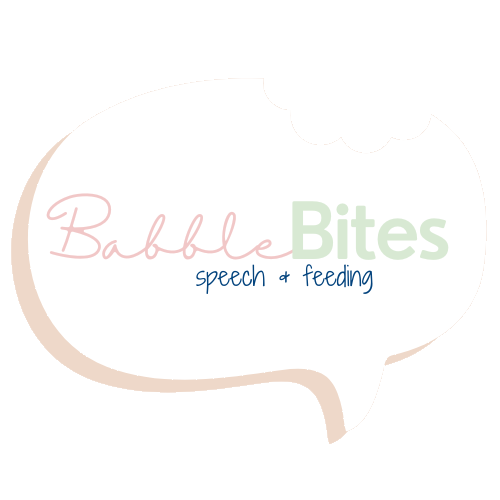Pop, Blow, Talk! How Bubble Play Encourages Early Language Skills
Bubble play is a fun, powerful way to spark language in toddlers.
What’s small, floaty, and full of speech potential? Bubbles! These magical spheres of fun aren’t just for giggles—they’re a favorite tool among speech-language pathologists (SLPs) for good reason. With every "pop!" comes a chance to support your toddler’s growing language skills in a fun and natural way.
Why SLPs Love Using Bubbles for Toddler Speech
Who doesn’t love bubbles? Bubbles are every SLP’s favorite activity to elicit language from babies to preschoolers. Why? Bubbles may seem simple, but they’re a powerhouse for promoting early language development.
Playing with bubbles:
Encourages pre-linguistic skills like joint attention, anticipation, and turn-taking
Creates opportunities for verbal routines
Features easy to say words with early-developing sounds (/p, b, m, d/)
Promotes functional communication (requesting, commenting, responding, asking)
How to Use Bubbles to Encourage Language
Use bubble play intentionally with short phrases, predictable routines, and interactive pauses to help encourage both non-verbal and verbal communication with your child.
Here’s how to help elicit your toddler’s language while playing with bubbles:
Narrate what you’re doing with 1-3 word phrases, here are some examples: open bubbles, dip dip dip, ready, set… go!, blow bubbles, bubbles up, pop bubbles, up and down, pop pop pop, big bubbles, small bubbles
Create verbal routines: Say the same words and phrases every time you complete one part of the bubble routine.
Try this verbal routine:
Model: “Ready, set [pause] go!”
Repeat at least 3 times. On the 4th try, pause longer (about 5 seconds) and look at your child expectantly (smile, eye contact, raised eyebrows).
Respond to any attempt to fill in the word—whether it’s a sound, approximation, or clear “go”—with enthusiasm:
“You told me ‘go!’” and blow the bubbles, to show your child you understood their communication attempt.This might look like a simple vocalization (e.g. “uh” “eh”), an approximation (e.g. “gu,” “doe,” “oh”), or the true word (“go”).
Continue repeating your verbal routines, and let your child practice their new words!
Modeling language in play with verbal routines, like, ‘Ready, set… go!’ can lead to a baby’s first words.
Phrases and Vocabulary Ideas to Use During Bubble Play
Vocabulary with Early Developing Sounds (P, B, M, D)
Simple, easy-to-say words that are perfect for emerging talkers.
Bubble or “bubu”
Pop
Up
More
Down
Blow
Dip
Bye-bye
Functional Phrases to Model During Play
Short, repeatable phrases that support understanding and expression.
Open bubbles
Dip in
Ready, set, go!
Blow bubbles
Bubbles up
Big bubble
Small bubble
Pop bubbles
My turn
Your turn
More bubbles
Bubbles go down
Bye-bye bubbles
Narration Ideas for Everyday Bubble Fun
Describe your actions and your child’s with simple sentences to support receptive and expressive language.
I’m opening the bubbles.
Dip the bubble wand in.
I’m blowing bubbles.
Wow look! The bubbles are going up!
I see big bubbles.
You’re popping the bubbles!
You popped a little bubble.
You’re dipping the bubble wand.
The bubbles are flying away.
Bubble play isn’t just fun—it’s a fantastic way to support your toddler’s communication. With just a few simple routines and words, you can turn giggles into growth. Try it today and see what your little one has to say!
Looking to buy a bubble wand? Click here! Or a bubble machine, click here!
Follow us on Instagram for “bite-sized” information on each blog post:


